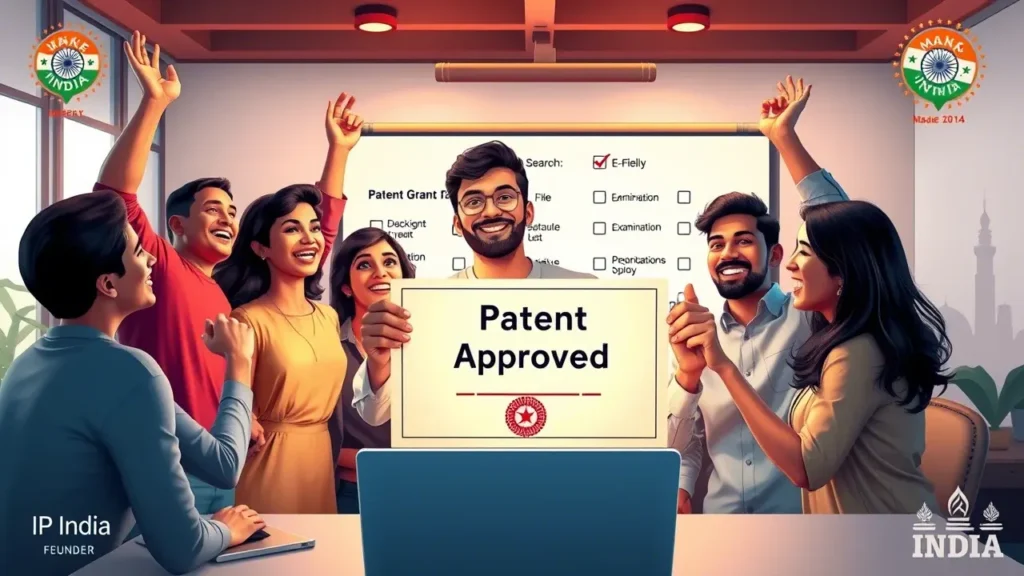How to Patent a Startup Idea in India: The Ultimate Guide for Founders

Getting a patent isn’t just some legal checkbox—it’s a game-changer that protects your startup from imitators, catches the eye of investors, and ramps up your valuation. In India’s buzzing innovation scene, a patent hands you exclusive rights to cash in on your big ideas for a solid 20 years. But let’s be honest, tackling India’s patent system can feel overwhelming. This straightforward, step-by-step guide breaks it down, tapping into government programs to keep protection budget-friendly and smooth.
Why Patent Your Startup Idea?
Patents transform ideas into defensible business assets. Here’s why they matter:
Market Exclusivity: Prevent competitors from replicating your innovation 26.
Investor Confidence: 87% of VCs consider patents critical for funding decisions 2.
Revenue Streams: License Your Technology to Generate Passive Income 6.
Valuation Boost: Patented startups command 5–10 times higher acquisition offers.
Eligibility: Is Your Idea Patentable?
Not all ideas qualify. Your innovation must meet three criteria:
Novelty: The invention wasn’t published or used globally before filing 311.
Inventive Step: It’s non-obvious to experts in your field 311.
Industrial Use: Practical application in manufacturing, tech, or services 311.
Non-Patentable Inventions: Algorithms, business methods, or atomic energy inventions (Section 3 of the Patents Act) 11.
Example: Amazon’s “1-Click” payment patent was rejected in India as a business method 11.
How to Patent a Startup Idea in India: Step-by-Step Guide

Step 1: Conduct a Rigorous Patent Search

Verify your idea’s uniqueness to avoid rejection:
- Use free tools: Indian Patent Office’s InPASS, WIPO Patentscope, or Google Patents 11.
- Keywords: Break down your innovation into technical terms (e.g., “biodegradable packaging material”).
- Professional help: For complex tech, hire search firms (~₹15,000) 8.
Step 2: Prepare Your Application

Provisional vs. Complete Specification:
| Type | When to Use | Deadline | Cost Savings |
| Provisional | The idea is not fully developed | 12 months | 50% lower fees |
| Complete Specification | Ready for examination | Filed directly | — |
Key Documents:
- Form 1 (Application)
- Form 2 (Specification with claims)
- Form 3 (Undertaking for foreign filings)
- Form 5 (Inventorship declaration) 47
Tip: Draft claims carefully—they define your legal protection scope.
Step 3: File Your Application

Options:
- Online: Via the IP India e-filing portal 3.
- Offline: Submit to patent offices in Delhi, Mumbai, Chennai, or Kolkata 9.
Startup-Specific Perks:
- Fee Discounts: 80% off government fees for DPIIT-recognized startups 28.
- Expedited Examination: Get patents in 12–18 months (vs. 3–5 years normally) using Form 18A 26.
Step 4: Respond to Examination Reports

The patent office issues a First Examination Report (FER) after review.
- Common Objections: Lack of novelty, insufficient disclosure 11.
- Response Time: 6 months (extendable) 3.
- Hearings: Attend in person/virtually if objections persist 8.
Step 5: Grant & Maintenance

Once approved:
- Publication: Patent granted is listed in the Patent Journal 3.
- Renewal Fees: Pay annually starting Year 3 (₹800–₹4,400 for startups) 8.
Documents Required for Patenting a Startup Idea

Essential paperwork includes:
- Covering letter listing documents
- Form 28 (Proof of startup status) 7
- Technical drawings/diagrams
- Abstract (150–200 words summarizing the invention)
- Power of Attorney (if using an agent) 7
Cost Breakdown: Patenting on a Startup Budget
Typical Costs for Startups:
Stage Government Fees Professional Fees
Patent Search — ₹0–₹15,000
Drafting — ₹30,000
Filing (Provisional) ₹1,600 —
Expedited Examination ₹8,000 —
Responding to Objections — ₹15,000
Total: ₹45,000–₹70,000 812.
Government Support:
SIPP Scheme: Free IP facilitators help draft/file 26.
Make in India Initiative: Rebates on filing fees 2.
Special Considerations for Tech Startups
Software/hardware innovations face unique challenges:
Avoid Section 3(k): Frame software claims with hardware integration (e.g., “a wearable device using AI to monitor heart rate”) 11.
Examples:
Rejected: Blackberry’s encryption algorithm (deemed “abstract”) 11.
Approved: AI-based medical diagnostic tool linked to imaging hardware.
Top Mistakes to Avoid
Public Disclosure Pre-Filing: Demo days or pitches can void novelty—file first! 11.
Vague Claims: Broad language invites rejections; use precise technical terms 3.
Missing Deadlines: 12-month limit for converting provisional to complete specs 3.
Ignoring International Protection: File PCT within 12 months to globalize rights 9.
FAQs: People Also Ask
Q1: Can I patent an idea without a prototype?
Yes! File a provisional specification with conceptual details. Build the prototype within 12 months while retaining your priority date 310.
Q2: How long does the patent process take?
Standard Route: 3–5 years.
Expedited: 12–18 months for startups 26.
Q3: What’s the cheapest way to patent my idea?
Use provisional filing (₹1,600) + SIPP scheme for free drafting help. Total cost: Under ₹5,000 28.
Q4: Can I file globally through India?
Yes! File a PCT application within 12 months of your Indian filing to seek protection in 157 countries 9.
Q5: What happens after the patent grant?
Monitor for infringement via market scans.
Renew annually post-Year 3.
Commercialize via licensing or enforcement suits 10.
Conclusion: Turn Your Idea into an Asset
Patenting isn’t a cost—it’s an investment in your startup’s future. By leveraging India’s startup-friendly schemes like expedited examinations and fee discounts, you can secure ironclad protection affordably. Start with a provisional patent to lock your priority date, collaborate with IP facilitators under SIPP, and focus on scaling your business. Remember: In the innovation economy, your ideas are your greatest currency. Protect them fiercely.
Pro Tip: Bookmark the IP India e-filing portal and SIPP Scheme portal for instant access to forms and facilitators 24.
